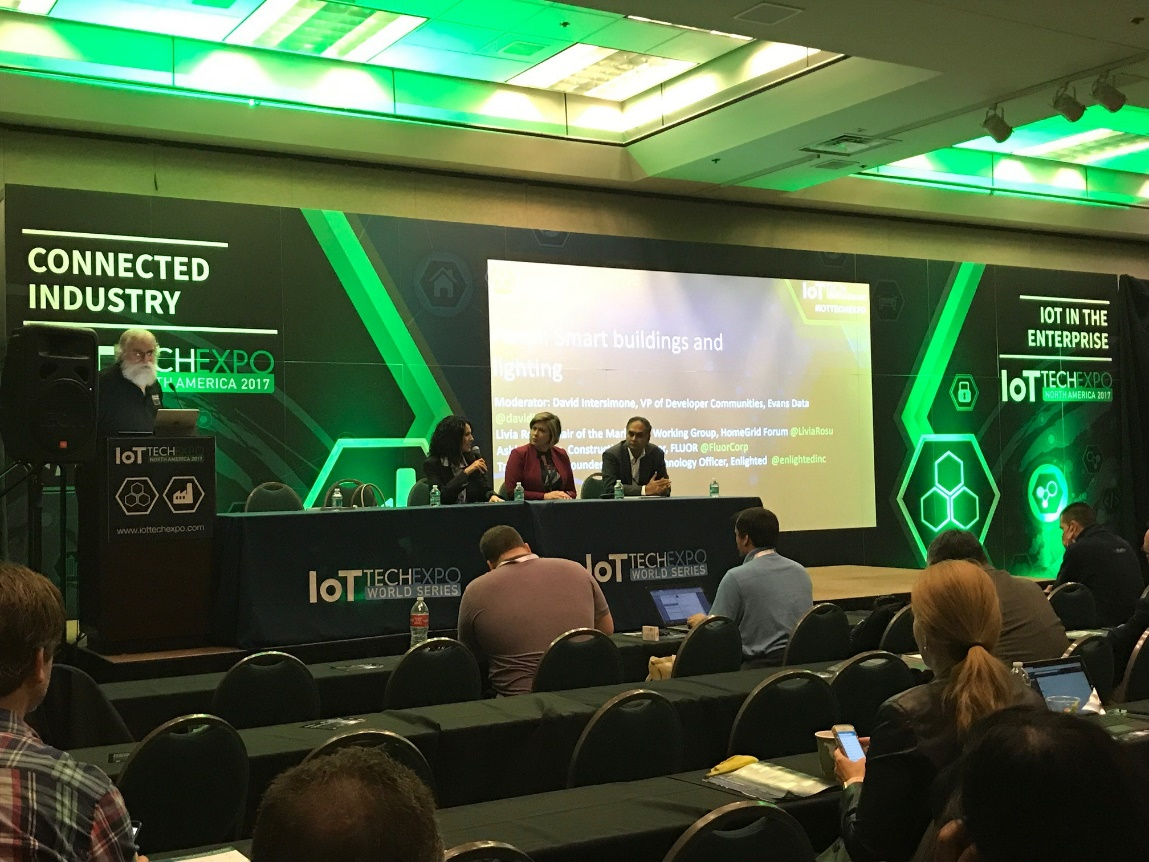By Livia Rosu, HomeGrid Forum Marketing Workgroup Chair
At the end of November, I attended the IoT Tech Expo North America 2017 in Santa Clara, California. This year’s event highlighted the most innovative technological advancements in the realms of the IoT. It was a great opportunity to take part in discussions on these innovations and explore the key aspects of the IoT, and how a connected society might work from an infrastructure, connectivity, and standards framework perspective.
I moderated a panel on: ‘Creating a standards framework for the IoT’, which highlighted the need for standards organizations to drive the required IoT framework forward. The HomeGrid Forum was joined by other alliances invited to talk about their efforts of addressing IoT coverage and performance requirements across various industries i.e. smart cities, smart homes, automotive and healthcare. As moderator, I was responsible for ensuring the conversation flowed towards analysing interoperability, as well as spectrum and bandwidth challenges for a complete portfolio of use cases. During the panel, it became apparent that interoperability between devices is key, along with security. We are witnessing data leaks and hacks on a global scale and these ongoing challenges have forced security to become a top priority for manufacturers, the industry and consumers. This trend is likely to continue as the volume of connected devices and our reliance on connectivity increases over time. The standardization panel was a great opportunity to highlight G.hn technology as the most robust backhaul for mesh connectivity and self-organized network (SON) capable of coordinating wired and wireless points for optimal performance.
I also joined a panel on: ‘Smart buildings and lighting’, in which we discussed what changes a building from simply being connected to becoming truly smart. I discussed how to use smart buildings and smart lighting management systems to boost energy efficiency adjusted to home users’ real consumption needs, along with the role and importance of smart grids and smart metering. A key focus of the panel was cost efficiency as a result of integrating these new technologies. I highlighted the advantage of using G.hn in this scenario, as it can utilize the existing wiring and legacy infrastructure already in place, reducing operational infrastructural costs. G.hn provides the cybersecurity features and real-time power usage capabilities required by the smart grid industry and can therefore empower building construction companies and electric utilities to successfully anticipate regulatory frameworks.
Another challenge that arises, when considering technology within smart buildings, is the increased risk of interference between electronic devices, which could affect functional behaviour. This is where the role of standards organizations is instrumental, because standards can ensure that interference is minimized, while adhering to a framework that is supported by the relevant regulator. Along with ensuring minimum requirements are met across the board, standards are a key driving force behind interoperability, which is essential for device longevity and overcoming the future challenges of the smart home.
At the HomeGrid Forum, we strongly advocate for standardization and promote the use and global adoption of G.hn, the leading Gigabit home networking solution working on multiple physical wires: powerline, coaxial cable, phoneline and POF (Plastic Optical Fiber). It is a single unified, multi-sourced networking technology that can solve complexities around IoT connectivity. These attributes make G.hn ideal for smart homes, smart buildings, and smart cities. We believe that as connected devices continue to converge both inside and outside the home, the need for interoperability will grow year-on-year, and therefore conversations on standards, and panels such as the ones I contributed to in Santa Clara, are key to the success of the smart home industry.
If you would like to learn more about G.hn technology, then please click here.

